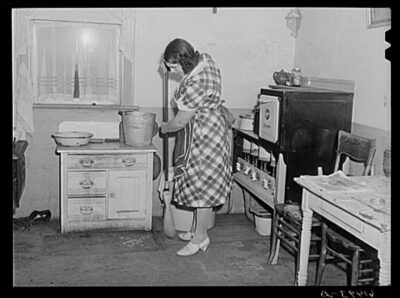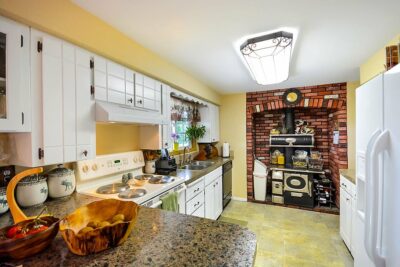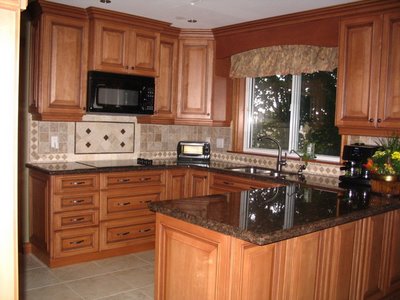Get Your Kitchen Floors Working – Best Flooring Options for the Kitchen

Few floors inside your house will have to endure different kinds of abuses than that of your kitchen floor. From plumbing leaks down to hard-to-remove stains, not to mention the level of traffic that goes through your kitchen day in and day out, there’s no denying that your kitchen floor has experienced a lot.
Because of the heavy tasks that your kitchen floor is assigned, it is subject to wear and tear and over time will require replacement. As such, if your kitchen floor is past its prime, it’s about time that you change it with a new one.
When it comes to kitchen flooring, you don’t have to necessarily stick with the classic tile or linoleum. In the past few years, options for kitchen flooring have expanded immensely, allowing for better design flexibility. So, before you settle with the “classics,” you might want to check what other options you have.
Read Also: Top 5 Ways to Improve Your Kitchen
Ideal Kitchen Flooring Solutions for Your Kitchen
Some of the best materials for kitchen floors have been around for hundreds of years. Others are the product of contemporary manufacturers who are in the quest to create the next best flooring material. Below are the flooring options from which you can choose.
Ceramic tile
This is a very popular flooring solution for the kitchen as they are relatively cheap compared to other flooring materials and they are available in a wide variety of colors and sizes. Ceramic tile floors suffer from a few notable drawbacks. Other than the grout lines that present some cleaning problems, they can be cold underfoot, though this can be remedied with the installation of a heated subfloor.
Tile floors also have a hard surface which can lead to fatigue, especially if you are cooking and standing for a long period. Such a characteristic is also what makes it noisy and unforgiving when you drop glassware.
Vinyl
If you are willing to look past some environmental considerations, then vinyl flooring products are probably a good choice. Both sheet and resilient vinyl are impervious to different elements, easy to clean, and available in an assortment of colors and styles, many of which can replicate the appearance of other flooring types. They are also comfortable underfoot. However, vinyl kitchen floors run the gamut from low to high quality, so when going for this option be sure to do a thorough investigation to avoid purchasing low-quality ones.
Wood
Wood flooring might be too luxurious-looking for the kitchen, but many homeowners are still opting for hardwood floors for the fact that they easily lend charm to an otherwise busy space. One of the main reasons why hardwood kitchen flooring is making a comeback is the prevalence of open floor plans wherein there are no boundaries between the kitchen and living room. And wood floors allow for easy design transition. Be sure to pay attention to spills and floods, as wood floors run the risk of warping.
Stone
If you are looking at giving your kitchen a natural look, stone floors are the most ideal pick. They are virtually maintenance-free and they still look good even when they age. Stone floors also lend a rustic feel to kitchens, making them more comfortable. However, similar to tiles, stone floors are hard and cold and do not have sound-deadening qualities.
Linoleum
Real linoleum is made from solidified linseed oil that gives it a distinctive appearance, feel and smell. Aesthetically pleasing and low maintenance, linoleum was popular back in the day, until it was replaced by cheap vinyl products that replicate its look. Linoleum floors are still available though, only they carry an expensive price tag.
Laminates
This flooring option comes in a floating system that can be installed even by a homeowner who has no experience with home improvement. Laminates are available in different sizes, shapes, and faux finishes. Although moisture resistant, an unnoticed leak can send water beneath the floating floor, which in turn can rot your subfloor.
Bamboo
Considered the next best thing to wood, bamboo is still a new flooring solution that is steadily making its way into homes. Made from dried and pressed bamboo grass, this flooring appears like light hardwood at first glance. However, a close look at the material shows a tighter grain. It is also resistant to moisture, making it a good choice for the kitchen.
Cork
This type of flooring is made from a natural material that boasts a comfortable feel underfoot and an uncommon advantage over other flooring options: it does not produce noise. Since it is porous, cork flooring has an excellent sound-deadening property, making it a good choice for a space where noise produced by the clinking sound of glassware and steel is prevalent.
Rubber
If you want to be on the environment-friendly side of things, rubber flooring is something you should not miss. Busy professional chefs have long been using this flooring material in their kitchens because of its durability and maintenance-free features. Nonetheless, they can withstand the traffic inside and they are easy on both feet and back. Rubber flooring usually comes from recycled tires and is available in a wide variety of colors.
Read Also: Different Types of Flooring in Abu Dhabi
Some professional tips to keep in mind when choosing kitchen flooring
Of course, when choosing a flooring solution for your kitchen, consider its functionality and aesthetics. Remember that your kitchen floor is a work surface that will endure a lot of wear and tear, so it pays to pick a hardworking product that will provide exceptional service and will also make a huge visual impact on your space. It would also be wise to speak with professionals so as to get proper guidance when you decide to make your purchase.





